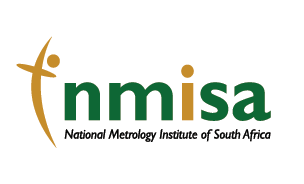About
NMISA's Temperature & Humidity Section has internationally recognised expertise and facilities aimed at improving the practical measurement of temperature and humidity. We help establish and maintain the International Temperature Scale of 1990, ITS-90. For the safe and effective operation of industrial processes, accurate measurement of temperature and Humidity is crucial. We support industrial measurements through a wide range of activities including research, industrial partnerships, consultation, and training.
We support industrial measurements through a wide range of activities including research, industrial partnerships, consultation, and training. We offer calibrations against the South African National Standards that are validated through international comparisons. We provide cost-effective, impartial, quality assured solutions: from everyday measurements to those at the extremes of sensing technology, such as temperatures above 2000 °C, or humidity in an extreme range. We work with a variety of sectors including aerospace, manufacturing, space, medical and pharmaceutical
Key Facts
The kelvin, unit of thermodynamic temperature, is defined by fixing the numerical value of the Boltzmann constant k to 1.380 649×10−23 J⋅K−1. This unit is equal to kg⋅m2⋅s−2⋅K−1
Relative humidity (RH) is a ratio, expressed in percent, of the amount of atmospheric moisture present relative to the amount that would be present if the air were saturated at the same temperature.
How we can help you
The Section offers measurement, calibration, training and consultation services as listed below:
Calibration of contact thermometers from -196 °C to 1555 °C:
platinum resistance thermometers (PRTs) can be calibrated from -196 °C to 660 °C.
thermistors from 0 °C to 60 °C.
thermocouples from -80 °C to 1555 °C and
liquid-in-glass thermometers from -25 °C to 280 °C.
Calibration of infrared radiation thermometers from 0 °C to 1600 °C and blackbody radiation sources from 0 °C to 2000 °C.
Traceability for contact thermometry is obtained from thermometric fixed point cells from the triple point of argon (Ar) (-189.344 2 °C) to the freezing point of copper (1084.62 °C). (Pt-Rh thermocouples are calibrated at the melting point of palladium (1553.5 °C) using the wire-bridge method.
Development of calibration methods and transfer traceability to industry and African NMIs.
Dissemination of temperature scales by calibration of temperature sensors.
Provide a link between the African region and the rest of the world's NMIs through comparison measurements in temperature and humidity.
Fixed points calibration of standard platinum resistance thermometers from Ar to Al points.
Calibration of other contact thermometers in the temperature range from -80 °C to 1600 °C.
Fixed point calibration of thermocouples in the temperature range from Sn to Pd points.
Calibration of surface thermometers in the temperature range from 0 °C to 450 °C.
Calibration of radiation thermometers and blackbody radiation sources from 0 °C to 2000 °C.
Calibration of hygrometers, saturated salt solution and humidity related measuring equipment from 5 %rh to 95 %rh.
Calibration of dewpoint meters from -75 °C to +70 °C.
Calibration of water activity meters from 0,05 aw to 0,95 aw.
Traceability for radiation thermometry is obtained from contact thermometers up to 500 °C and from a spectrally characterised monochromatic radiation thermometer calibrated at the freezing point of silver (961.78 °C) or copper (1084.62 °C) from 600 °C.
Temperature and Humidity metrology practical training to industry and African national metrology institutes.
Provide training through internships and bursary programmes.
Supports fair trade, by underpinning an internationally respected measurement infrastructure in South Africa.
Development of National Standards
Primary traceability for contact thermometry
The national measurement traceability for ear radiation thermometers
Radiation thermometry and black body source measurement in the sub-zero temperature range
The national measurement traceability for Thermal imager
The Team
Name and Surname
|
Designation |
Email |
Telephone |
Yanga Ntolosi
| Scientist (Temperature & Humidity)
| yntolosi@nmisa.org
| +27 12 947 2896
|
Dr Efrem Kebede Ejigu
| Scientist: Humidity & Thermometry
| eejigu@nmisa.org
| +27 12 947 2748
|
Matome Maloba
| Scientist / Engineer Thermometry Temperature and Humidity
| mmaloba@nmisa.org
| +27 12 947 2806
|
Dorothy Segwatibe
| Scientist : Temperature and Humidity
| dsegwatibe@nmisa.org
| +27 12 947 2744
|
Events
SANAS Specialised Technical Committee (STC) meetings every year
AFRIMETS Technical committee meeting every year
APMP Technical committee meeting every year
CCT Technical committee meeting every two years
Contact
Please use the following information to contact us.
